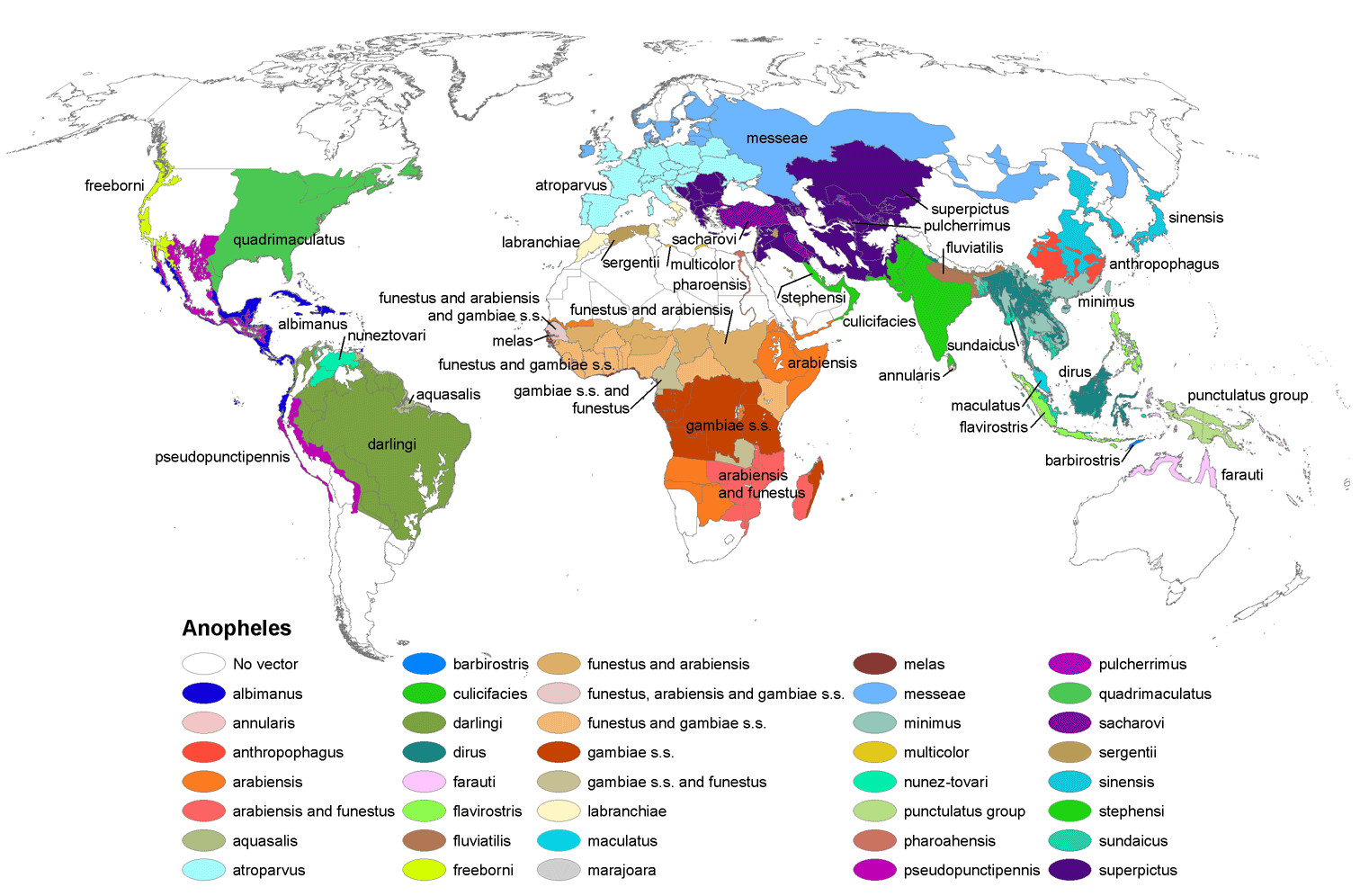
This map shows the current distribution of the species in the genus Anopheles, the vector for malaria. While malaria has been eradicated from many regions of the world, the vector has not, leaving the potential for malaria resurgence in the absence of vigilant public health campaigns. This map also shows why global warming will probably not expand the range of malaria: malaria is not constrained by the range of its mosquito vector. Pesticide campaigns to eradicate Anopheles mosquitoes are not the best way to control malaria. Instead, intervening in the transmission of malaria is the most effective approach.
The equation for the transmission of malaria is
R = (ma^2bp^n) / -r ln(p)
where R is the virulence of malaria, defined as the number of infections subsequent to an initial infection. If R is greater than 1, malarial incidence will increase; if R is less than 1 malaria will not be sustained in the human population.
m is the ratio of mosquitoes to people (# mosquitoes/ # humans)
a is the number of people bitten by a single mosquito per day
b is the proportion of infectious bites
r is the recovery rate (how long malarial parasites remain in the human)
n is the intrinsic incubation period for malaria in mosquitoes. Usually, malaria needs to incubate in mosquitoes for 10-14 days before that mosquito can transmit the infection
p is the daily probability of survival for a mosquito
No comments:
Post a Comment